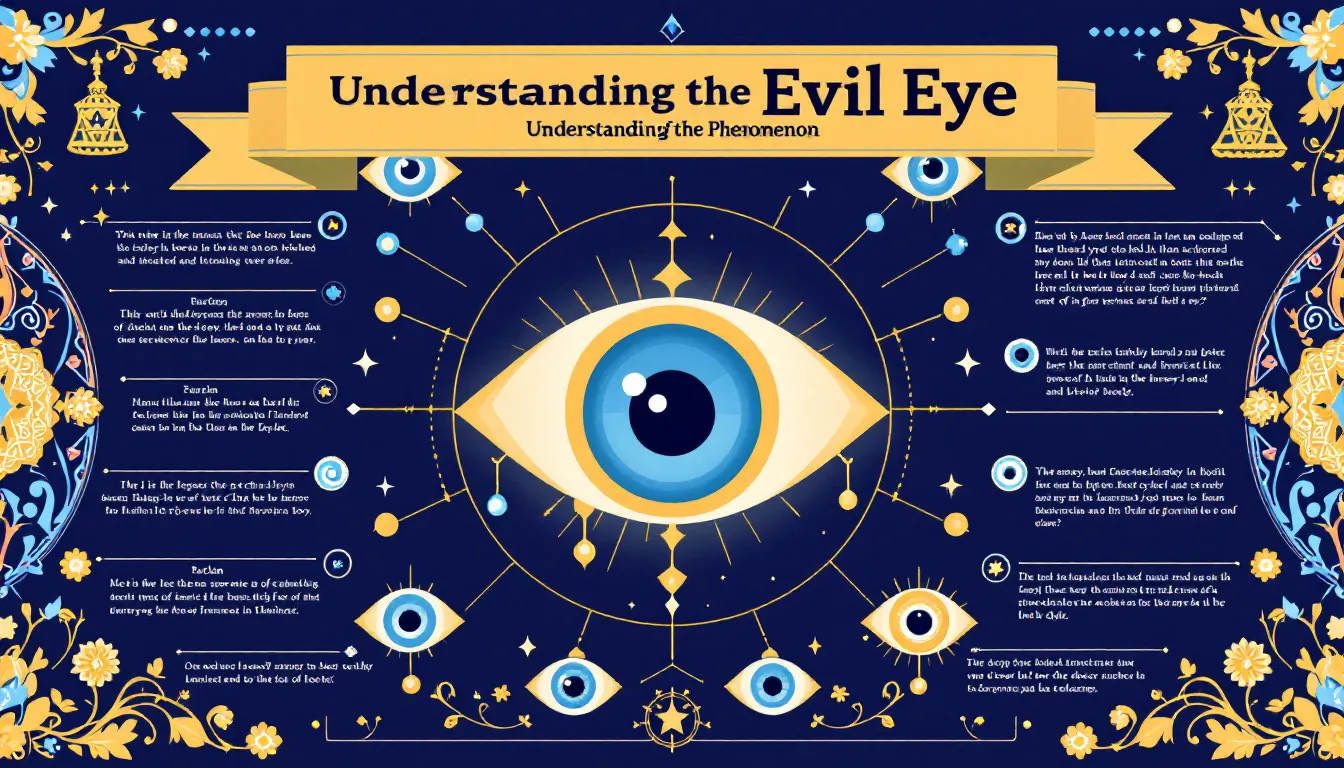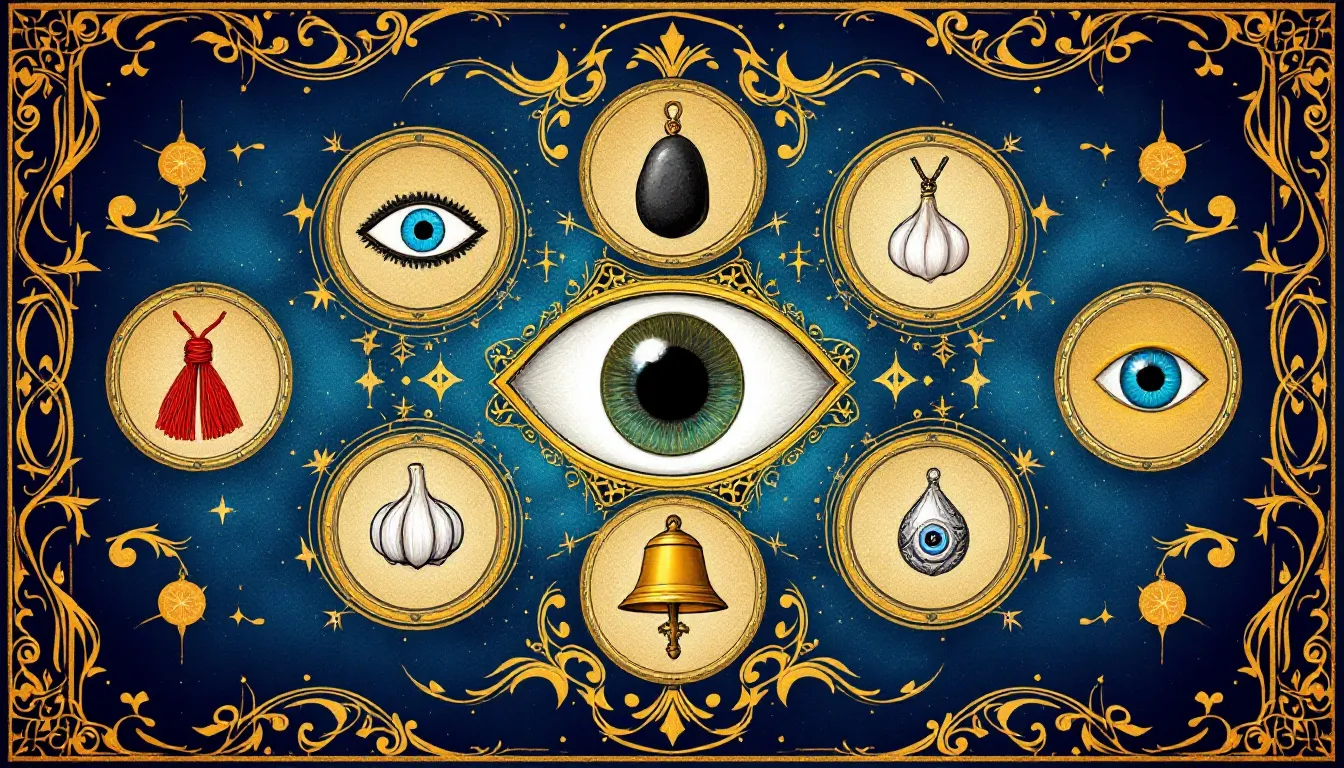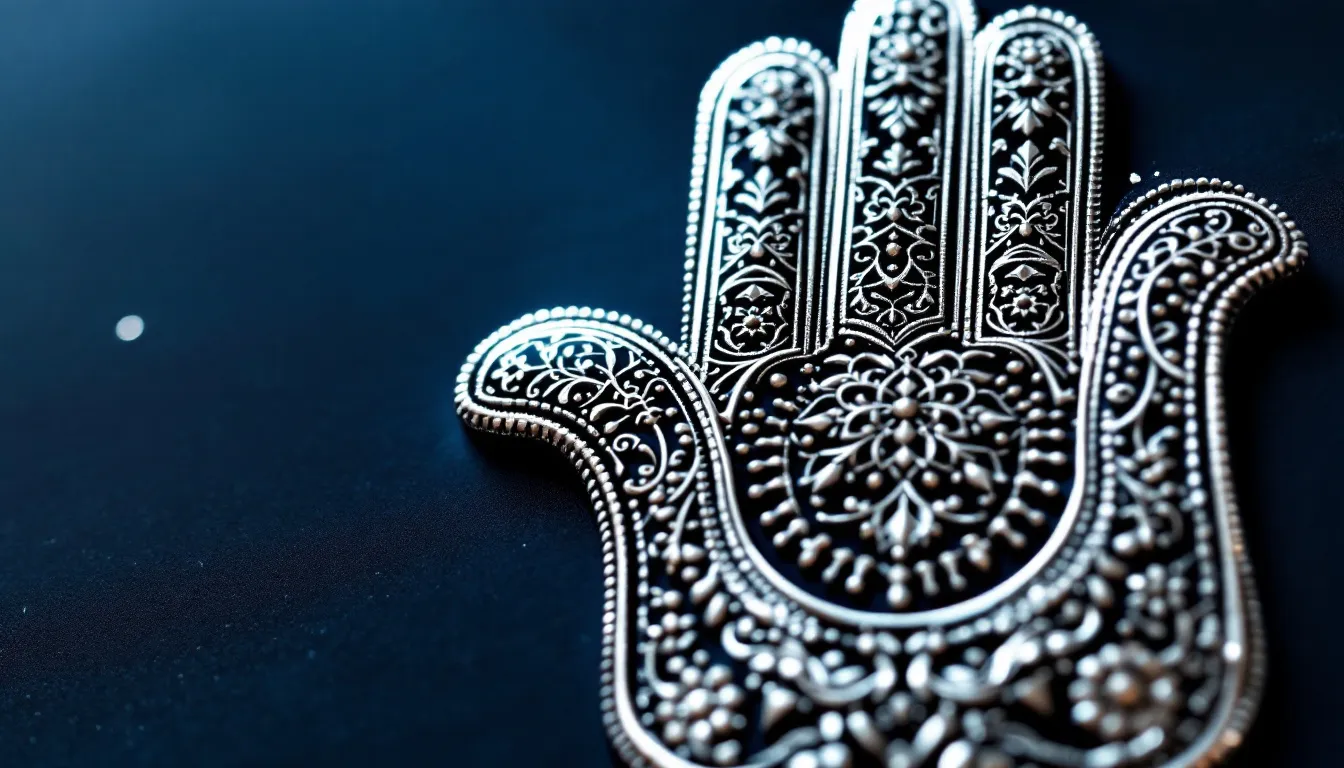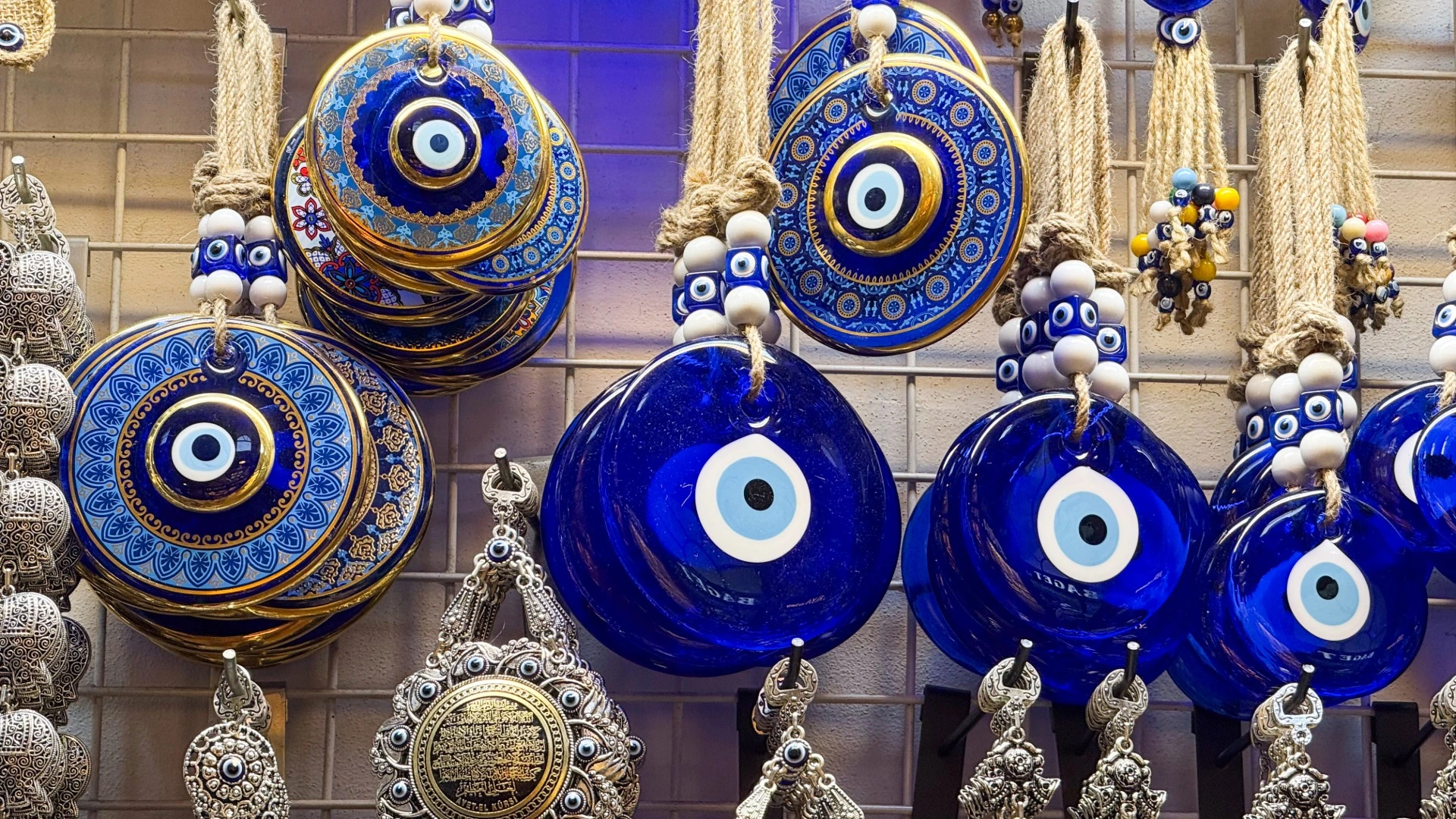Evil Eye Protection: 9 Authentic Ways to Shield Your Energy in Modern Life
What is the evil eye and why does protection matter today?
Definition and scope
The evil eye is the belief that envy or a hostile gaze can transmit harm—misfortune, illness, or “drained” luck. The idea of the evil eye has significantly influenced the development of protective amulets and rituals across various cultures, shaping how communities respond to perceived threats. This supernatural belief in a curse brought about by a malevolent glare is usually inspired by envy. Communities across the Mediterranean, Middle East, South Asia and beyond developed phrases, amulets, and rituals to neutralise that harm.
Psychological and social lens
Beyond spirituality, envy and negative attention can elevate stress and anxiety, affecting behaviour and wellbeing. Fear of attracting the evil eye can strongly influence people's actions, prompting them to adopt protective measures to guard against perceived harm. Protective practices (amulets, prayers, rituals) often restore a sense of safety and healthy boundaries.
Cultural continuity (Lebanese & UK context)
Lebanese tradition treats protection as essential for family safety, business success, and personal wellbeing. Believing in the effectiveness of evil eye protection can offer psychological comfort and a sense of security. In the UK, interest has grown with modern stressors (workplace competition, social media) and fashion trends that echo authentic symbolism. Evil eye jewelry has gained popularity among celebrities and is a current fashion trend. Humility and discretion are also advised in many cultures to avoid attracting envy.
How has belief in the evil eye been documented historically?
Ancient roots and shared symbols
References appear in Mesopotamian texts and classical Greece (e.g., baskania). The concept of the evil eye has been documented in various ancient cultures, including those of Mesopotamia, Greece, and Rome. Early references to the evil eye date back to ancient Mesopotamian texts, which include incantations and eye-shaped amulets. In ancient Greece, the term for the evil eye is 'baskania' and was mentioned by multiple classical authors. Museum collections across Europe include eye-shaped amulets. Two enduring symbols recur:
-
Nazar (blue eye): glass bead/amulet used to “reflect” harm.
-
Hamsa/Khamsa (open hand): an open palm, often with an eye, used across Islamic, Jewish and Christian communities in North Africa and the Middle East.
Religion and folklore
Traditions describe deities or prayers that protect against the evil eye. In many cultures, invoking God's name or offering blessings—such as saying "May God protect you" or "May Allah bless you"—is a common practice for protection against the evil eye. Everyday customs—like saying “Masha’Allah” after praise, or symbolic gestures—aim to prevent unintended harm. Compliments or praise can attract the evil eye, leading to misfortune for individuals who stand out due to their beauty or success. In Arab culture, saying the phrase “Masha’Allah” is specifically believed to prevent the evil eye from affecting a compliment.
Which 9 authentic methods protect against the evil eye?
(Each method preserves your original detail; overlapping ideas were combined for clarity.) Cultural practices associated with the evil eye vary significantly, from rituals in the Middle East to protective symbols in Mediterranean countries. Across these cultures, various means—such as amulets, rituals, and prayers—have been developed to protect against the evil eye.
1) What do traditional evil eye amulets and jewellery do?
-
Classic blue-and-white nazar charms and related evil eyes motifs are worn or placed to deflect negativity.
-
Phrases such as “Masha’Allah” after compliments add social-spiritual protection.
-
These amulets are carefully created with intention and craftsmanship: proportion, colour, and purpose are part of the tradition.
-
Your note preserved: Our handcrafted evil eye jewellery uses traditional colourways and intention-setting. Evil eye jewelry can be layered with other pieces to create a personalized look.
2) How does the Hamsa hand add layered protection?
-
The open palm (often with a central eye) symbolises blessing, strength, love, power and divine connection, and is widely believed to be effective in protecting against negative influences.
-
Worn alone or paired with a nazar for “stacked” protection that addresses multiple forms of harm.
3) Which gemstones support protection—and for whom?
-
Grounding shields: black tourmaline, obsidian, hematite.
-
Traditional “sight” stones: lapis lazuli, sapphire (echo the blue-eye palette).
-
Gentler options: amethyst, moonstone (for sensitive wearers).
Many of these gemstones are valued in various traditions for their healing properties and are believed to offer protective and healing properties, such as warding off evil, promoting health, and bringing good luck.
-
Selection can reflect personal sensitivity and context (workplace vs. public exposure).
4) How do blessing and consecration rituals “activate” items?
-
Traditional Lebanese practices include specific prayers, incense, and lunar timing (often at the new moon).
-
These rituals are believed to harness magic to enhance the protective power of the item.
-
Intention-setting programs the purpose of the item; re-blessing keeps it strong.
5) What environmental strategies protect homes, workspaces, and vehicles?
-
Place symbols at entrances/windows; use mirrors strategically; keep a discreet amulet near desks or dashboards.
-
Cleansing methods such as salt, herbal smoke, or local equivalents refresh the space. Cleansing with salt, burning herbs, and performing rituals like "Nazar Utarna" are methods used to remove the evil eye. Spitting three times after receiving a compliment is a common practice to neutralize potential envy.
6) How do you recognise and respond to a suspected evil eye “hit”?
-
Common signs described in tradition: sudden fatigue, unexplained ailments, streaks of bad luck, interpersonal or business friction. The person experiencing these effects is often seen as the victim of the evil eye. Common symptoms believed to result from the evil eye include physical ailments, mental distress, a run of bad luck, and impacts on possessions. Certain words or expressions of envy are believed to hurt the victim by attracting negative energy.
-
Swift responses: a short protective prayer, visualisation, and briefly touching your amulet to “ground and shield.”
7) How can traditions adapt to modern life (social media, work, cities)?
-
Online: limit oversharing that triggers envy; post with protective captions where culturally appropriate.
-
Work: choose subtle, professional pieces; keep a discreet protective token at your workstation.
-
Urban living: higher exposure can call for stronger shields and more frequent cleansing.
Some traditions consider the effects of the evil eye to be worse than other negative influences, such as workplace gossip or social media envy.
8) What does family and generational protection look like?
-
Children are seen as more sensitive; small, age-appropriate items and family blessings are common, emphasizing the importance of protecting each person, especially children, from the evil eye.
-
Pregnancy/childbirth: dedicated amulets and prayers protect mother and child.
-
Teach recognition/response skills as children grow to maintain continuity.
9) How does evil eye protection integrate with other spiritual practices?
-
Complements meditation, prayer, energy healing, and religious observance, and is believed to align with and strengthen the spirit of the wearer.
-
Practitioners (e.g., healers) may wear protective pieces during sessions for boundary-keeping.
-
An interfaith approach respects diverse paths while maintaining shared protective aims.
Which colours and materials strengthen protection—and why?
Colour meanings (traditional associations)
-
Blue: spiritual sight, calm, divine protection (core of the nazar).
-
White: purity, clarity, renewal.
-
Black (centre or accents): absorbs/neutralises negativity.
Material choices
-
Natural materials (sterling silver, gold, gemstones) are traditionally favoured for “conducting” intention.
-
Mass-produced items may miss traditional proportions or intention; artisanal preparation preserves meaning.
How do these methods compare at a glance?
|
Method |
Primary Focus |
Where It Shines |
Discretion at Work |
Notes |
|---|---|---|---|---|
|
Nazar amulet/jewellery |
Deflecting envy/hostile gaze |
Daily wear, gifts |
High (subtle pieces) |
Classic, versatile |
|
Hamsa hand |
Blessing + boundary |
Home entry, pendants |
Medium–High |
Layers well with nazar |
|
Gemstones |
Grounding/clarity |
Public exposure, travel |
High |
Tailor to sensitivity |
|
Blessing/consecration |
Activation/renewal |
New or inherited items |
High |
Align with lunar cycles; example: a priest blessing a new home with holy water |
|
Environmental setup |
Space protection |
Home, office, car |
High |
Place at entries/windows |
|
Recognition/response |
Rapid neutralising |
Social or high-pressure moments |
High |
Short prayer/visual |
|
Modern adaptation |
Social media/work/urban |
Online + office |
High |
Limit envy triggers |
|
Family focus |
Children, pregnancy |
Home, hospital visits |
High |
Age-appropriate items |
|
Integration w/ practice |
Deep spiritual work |
Meditation, healing |
High |
Complements prayer/ritual |
How do you bless, cleanse, and maintain protection items?
Step-by-step: simple consecration (adapt to your tradition)
-
Prepare the space: quiet area; optional incense or a candle.
-
Set intention: clearly state whom/what the item will protect.
-
Offer prayer: recite a familiar prayer or protective verse.
-
Time it (optional): new moon or a meaningful family date.
-
Seal the intention: hold the piece; visualise a clear shield around it.
Routine cleansing (choose one or combine)
-
Moonlight exposure: place on a windowsill overnight.
-
Salt method: near (or lightly on) dry salt for several hours; avoid saltwater on delicate pieces.
-
Smoke cleansing: pass briefly through herbal smoke appropriate to your culture.
-
Quiet reset: a minute of slow breathing while holding the piece and repeating your intention.
Physical care
-
Avoid knocks/scratches that mar the eye symbol.
-
Check settings/cords; repair or replace damaged amulets promptly.
Re-blessing cadence
-
Annually at minimum, or after major life events/high-exposure periods.
How can you adapt protection for modern work, social media, and city life?
Professional environments
-
Choose minimalist pieces (e.g., small pendant or bracelet).
-
Keep a small symbol in a drawer or on a bookshelf if jewellery isn’t appropriate.
Social media hygiene
-
Delay posting major wins until they’re stable.
-
Pair celebrations with gratitude language familiar to your culture (e.g., adding “Masha’Allah” where appropriate).
Urban resilience
-
Schedule more frequent cleansing if you commute through crowded, high-stress spaces.
-
Combine personal wear with a small home or car talisman.
What does family-centred protection involve across generations?
Children and teens
-
Lightweight, safe designs; teach simple phrases or visualisations.
-
Keep a small symbol near school bags or prams.
Pregnancy and early parenthood
-
Dedicated amulet or blessing for mother and baby, such as a Sterling Silver Clover Bracelet – Perfectly Sized for Everyday Elegance.
-
Short, daily blessing routine to create continuity.
Passing on tradition
-
Share the meaning behind colours, symbols, and phrases.
-
Record family prayers or steps to preserve your lineage’s approach.
How does positive energy amplify protection?
Why it matters
Uplifting mindsets and actions are described as the “ultimate shield,” strengthening any amulet or ritual by reducing envy triggers and reinforcing calm.
Everyday ways to cultivate it
-
Wear a meaningful piece as a daily reminder to act with kindness and gratitude.
-
Practice brief morning intentions or gratitude journaling.
-
Maintain supportive relationships and spaces free from hostility.
-
Use short breathing or mindfulness breaks to reset after difficult interactions.
What does the science say about protective symbolism?
Multiple perspectives that can coexist
-
Belief effects: feeling protected can lower stress and improve confidence.
-
Ritual benefits: repeated, meaningful actions reinforce boundaries and self-regulation.
-
Social signalling: visible symbols can communicate values, shaping interactions more positively.
How can you build your personal protection practice over time?
A simple progression
-
Start with one well-made piece (nazar, Hamsa, or a gemstone blend) and a short daily intention.
-
Add environmental support (doorway symbol, car token) if your exposure is high.
-
Learn a quick response (prayer/visualisation) for tense moments.
-
Maintain with monthly cleansing and an annual re-blessing.
-
Share with family—teach children age-appropriate steps to keep the tradition alive.
What are the most frequently asked questions about evil eye protection?
What colours are best?
Blue for spiritual sight and calm, white for clarity, black to absorb negativity. Choose combinations that match your needs and culture.
Can children benefit?
Yes—traditions often prioritise children with gentle, safe designs and simple prayers. For adults and older children, discovering spiritual jewellery layering techniques can offer new ways to embrace both tradition and style.
Is gifting okay?
Absolutely. It symbolises a wish for protection and wellbeing.
Can jewellery really help?
Many people feel spiritually safer and psychologically steadier when wearing protective symbols; both aspects can matter.
How do I keep pieces effective?
Cleanse regularly, repair damage quickly, and re-bless at meaningful intervals.
What’s the key takeaway?
Authentic evil eye protection blends symbol, intention, and practice. Whether you lean spiritual, cultural, or psychological, a thoughtful routine—quality pieces, respectful prayers, smart modern adaptations, and regular upkeep—creates a practical, enduring shield for you and your family.
Conclusion:
Embracing Evil Eye Protection in Modern Life
The belief in evil eye protection is a timeless tradition that transcends cultures and centuries, offering a powerful shield against negative energy, envy, and bad luck. Whether through wearing carefully crafted evil eye necklaces and jewellery, using protective talismans like the nazar or Hamsa hand, or practicing cleansing rituals, these methods provide both spiritual comfort and a sense of empowerment. In today’s fast-paced world, integrating these ancient protective practices can help maintain positive energy, foster wellbeing, and guard against hostile forces in our environment. By honoring these traditions with respect and intention, you create a personal and family legacy of protection, good fortune, and good vibes that can endure across generations.
Frequently Asked Questions (FAQs) About Evil Eye Protection
What is the evil eye and why is protection important?
The evil eye is a popular belief that a hostile gaze or envy can cause harm, misfortune, or illness. Protection matters because it helps shield individuals from these negative effects, restoring balance and positive energy. Modern surveys indicate a significant belief in the evil eye among populations in various countries, such as Greece and Muslim-majority nations.
How do evil eye necklaces and jewellery work?
Evil eye jewellery is a powerful symbol designed to ward off negative energy and bad intentions. Wearing these charms acts as a protective talisman, believed to reflect or absorb harmful gazes, keeping the wearer safe.
Are there specific colours that enhance protective powers?
Yes, blue is the most common colour associated with evil eye pieces, symbolizing calm, spiritual sight, and divine protection. Other colours like white and black also carry meanings of purity and negativity absorption, respectively.
Can children be affected by the evil eye?
Children are often considered especially vulnerable to the evil eye. Many cultures use age-appropriate amulets and blessings to protect young ones from harm and negative energy.
How can I cleanse or maintain my evil eye protection items?
Cleansing methods include exposing items, such as the Sterling Silver Blue Zirconia Eye Bracelet, to moonlight, using salt, burning herbs or incense, and performing intention-setting prayers. Regular cleansing keeps the protective powers strong and effective.
Is it okay to gift evil eye jewellery?
Absolutely. Gifting such amulets is seen as a thoughtful gesture that conveys wishes for protection, good fortune, and wellbeing to the recipient.
Can the evil eye protection adapt to modern life?
Yes. Many people wear subtle evil eye jewellery at work or use digital practices like protective captions on social media. These adaptations maintain tradition while fitting into contemporary lifestyles.
What is the difference between the nazar and the Hamsa hand?
The nazar is typically a blue eye-shaped amulet that reflects the evil gaze, while the Hamsa hand is an open palm symbol often featuring an eye, representing blessing, strength, and protection. Both are widely used protective talismans.
Is there scientific evidence supporting the effectiveness of evil eye protection?
While the protective power is rooted in cultural and spiritual beliefs, many find psychological benefits such as reduced stress and increased confidence when using these symbols. The rituals and symbols help create a sense of safety and positive energy.
How do I choose authentic evil eye jewellery?
Look for quality craftsmanship, traditional designs, and reputable sellers who respect the cultural significance of the evil eye. Authentic pieces often use natural materials and follow traditional colour schemes.





 https://sarasbeads.co.uk
https://sarasbeads.co.uk
Leave a comment